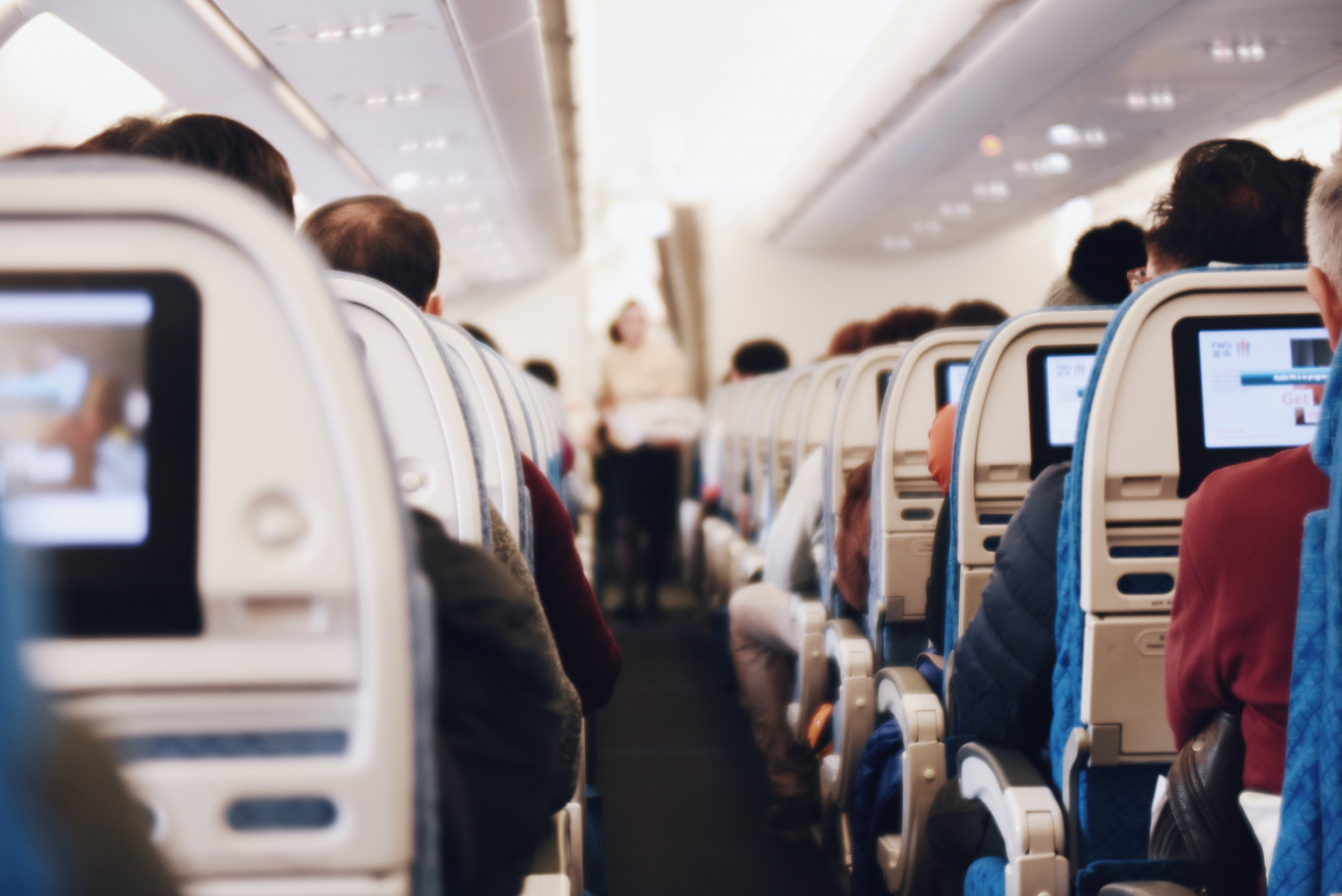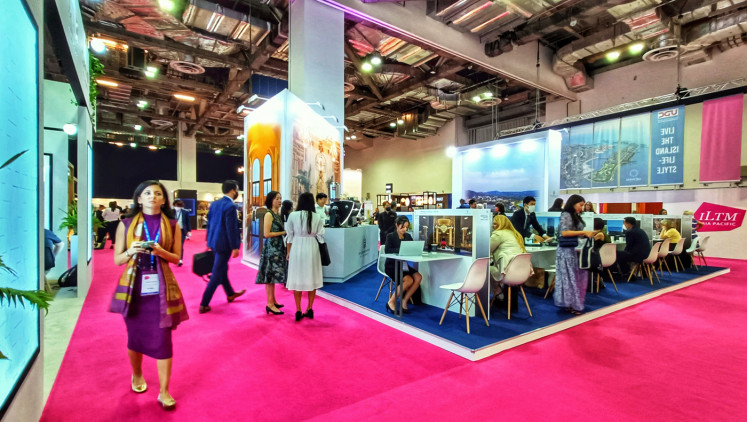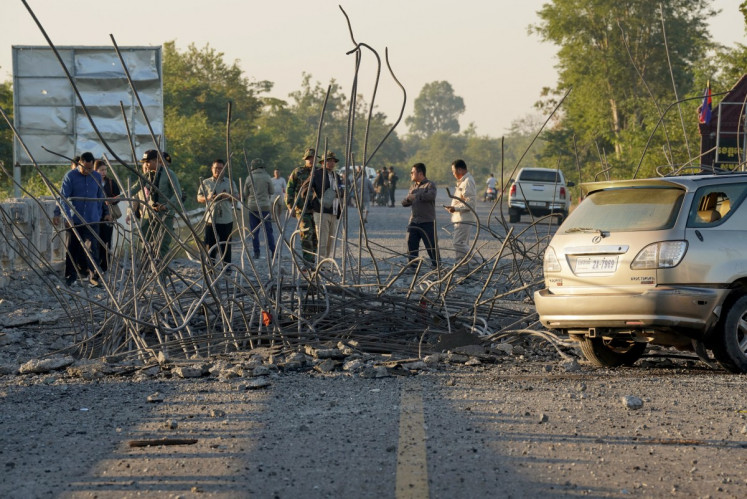Popular Reads
Top Results
Can't find what you're looking for?
View all search resultsPopular Reads
Top Results
Can't find what you're looking for?
View all search results‘Fully booked’: Luxury tourists arrange ‘revenge travel’ as pandemic subsides
Change text size
Gift Premium Articles
to Anyone
The travel industry and high-end travelers are ready to get back into flying high and living large.
With the pandemic slowly subsiding, the tourism industry is slowly coming back to life.
That growing optimism was definitely felt at the International Luxury Travel Market (ILTM) Asia-Pacific trade show. After a two-year hiatus due to the pandemic, the trade show was again held at Marina Bay Sands in Singapore from Sept. 5 to 8.
Over 800 attendees, consisting of travel designers, travel agencies, concierge companies and tour operators, thronged booths of airlines, cruises, hotels, resorts and tourism boards in the venue, eager to learn of the new offers and trends in the luxury travel industry.
On the opening day of the exhibition on Sept. 5, ILTM also released a report, titled APAC: Decoding the Luxury Travel Consumer’s Mindset. The report, compiled by research specialist Altiant, surveyed nearly 500 affluent travelers from six countries in Asia-Pacific and revealed new behaviors and preferences in the luxury travel industry.
“This research tells us that APAC travelers are highly motivated to begin their life of traveling again,” Alison Gilmore, ILTM portfolio director, said at the opening of the trade show at the Ritz-Carlton Millenia in Singapore. “They’re looking to make up for lost time and see the world.”
According to the report, almost 50 percent of the respondents now value travel experiences more than material goods. As for destinations, beach holidays remain the most popular among 48 percent of the respondents, while 43 percent of them prefer city breaks, which shows their willingness to mix and mingle again.
Travel enthusiasts: Customers visit the booths at the International Luxury Travel Market (ILTM) Asia-Pacific trade show, which was held from Sept. 5 to 8 at Marina Bay Sands in Singapore. (JP/Sylviana Hamdani) (JP/Sylviana Hamdani)‘Revenge travel’ and bucket-list destinations
After being cooped up at home for more than two years now, luxury travelers are apparently eager to release their pent-up wanderlust and explore the world again.
“What we see now after two years, there’s now a window of opportunity for revenge travel, where people have saved money for two years and reward themselves by traveling,” Batiste Pilet, director of Switzerland Tourism in Southeast Asia, said during his presentation on Sept. 6.
“This would explain why the huge increase in flight prices is not really throwing off the recovery, as people are really eager to travel.”
Switzerland has been seeing an increase of tourists from Southeast Asia since the onset of the pandemic. In the first half of 2022, the number of Southeast Asian tourists in the country almost reached 200,000, 36 percent below the 2019 level. And it’s been a steady increase from down 97 percent in 2020 and down 76 percent in 2021 from the 2019 baseline.
“We really have good hopes that actually by the end of next year, we should really be able to reach up and come back to 2019 pre-COVID-[19] levels,” Pilet said.
Currently, their national carrier, Swiss International Air Lines, has resumed five flights per week from Singapore, and also Bangkok, to Zurich.
“The flights are quite fully booked,” Pilet said. “There will be room for more operations soon.”
Simon Yip, vice president of Silversea sales in Asia, has also noticed the emerging trend of revenge travel among luxury travelers.
“I can see that people are now doing their revenge travel,” Yip said. “They’re going on longer trips, more frequently and going to new destinations as well.”
According to the vice president, Silversea has seen “a good 30 percent increase from 2019” in cruise bookings for 2023. The preferred length of cruise has also increased from 7-10 days to around two weeks.
“Another observation is that people now would like to go to those bucket-list destinations, like the Arctic, Antarctic or somewhere in Africa,” Yip continued. “So, now they would like to go beyond the classic programs.”
Multi-generational trips
As the pandemic recedes, there is also a trend among luxury travelers to go on trips together as a family.
“We see a clear trend of multi-generational trips, in which families are traveling together,” Raül Guerra, APAC regional director of Catalan Tourism Board, said. “We believe this is because people have a sense that they don’t know when another COVID-[19] could happen. So they want to take the opportunity now to take these trips together.”
According to Guerra, almost 20 million international visitors visited Catalonia per year before the pandemic. This number also includes around 20,000 Indonesian tourists, who adore the region’s natural landscapes and historic sites, such as La Sagrada Familia.
The same multi-generational travel trend is also perceived in Rwanda.
“We’re seeing grandparents, parents and children traveling together in Rwanda,” Ornella Kayitesi, first secretary of economic and political affairs of the high commission of the Republic of Rwanda in Singapore, said. “And they also want to interact a lot more with local communities than, you know, just going to see an attraction and then just leave.”
Approximately, 1.6 million business and leisure international visitors came to Rwanda each year before the pandemic. According to Kayitesi, around 70 to 80 percent of the number is returning to the country now.
Among Rwanda’s top attractions are Akagera, Nyungwe and Volcanoes National Parks, in which visitors can catch sight of the world-famous mountain gorillas and golden monkeys.
Tourism is back: Batiste Pilet, director of Switzerland Tourism in Southeast Asia, shows the numbers of tourists from Southeast Asia to Switzerland during his presentation on Sept. 6. (JP/Sylviana Hamdani) (JP/Sylviana Hamdani)Going outdoors
Due to COVID-19 concerns, many luxury travelers now prefer spending their time at outdoor attractions.
“More and more travelers would like to experience outdoor activities due to COVID-19 concerns,” said Keiko Matsuda, deputy manager of the global projects section of Japan National Tourism Organization (JNTO).
Therefore, Japan is now promoting its 34 national parks and a wide array of activities that visitors can enjoy in the parks, such as trekking, canoeing and skiing in winter.
As of Sept. 7, visitors coming to Japan are no longer required to take PCR tests, as long as they have received three doses of coronavirus vaccines. However, all tourists still have to join a packaged tour by local tour operators.
The number of international tourists coming to Japan in 2019 was 31.88 million. The number dropped to 4.12 million in 2020 due to the pandemic and dropped further to 250,000 in 2021 due to travel restrictions.
From January to July of this year, Japan has seen approximately 650,000 international visitors coming to the country.
“We’re not sure when tourism will be restored in Japan,” Matsuda said. “But we hope that restrictions will be eased in the near future, hopefully in this year.”
Friendlier locals
A change of behavior due to COVID-19 has not only happened among visitors. In Kyoto, it has also happened among the locals.
“Before COVID-19, [Kyoto] was too crowded, and we had had some problems between tourists and locals,” Takashi Nishimura, project manager of Kyoto City Tourism Association, said during an interview with The Jakarta Post on Sept. 7. “But after coronavirus, tourists were wiped out. So, locals enjoyed quiet, non-touristic Kyoto in the beginning.”
Before the pandemic, there were approximately 8.86 million international tourists coming to Kyoto each year. The number also includes approximately 38,000 Indonesian tourists coming to the city annually.
“But after a while, [the locals] realized how important tourism was to Kyoto’s citizens’ lives,” Nishimura continued. “So now the attitude of local people toward tourists is changing. [They have become] more friendly, more understanding and more accepting. I think the atmosphere is better than before.”
A lot of luxury hotels are currently being constructed in Kyoto. Among them are Shangri-La, Six Senses, Banyan Tree and Hilton, which are all expected to be fully operational by 2024 and 2025.
“So, there will be new luxury hotels when you come to the city,” Nishimura said. “And you can enjoy New Kyoto.”













